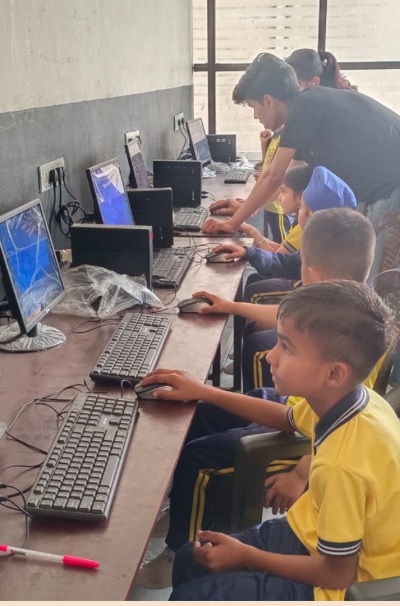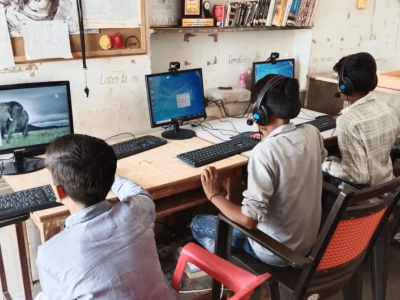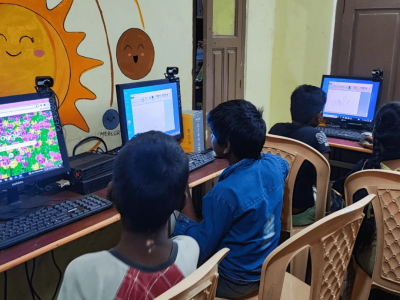- Aniruddha Malpani
- Education, learning
- November 21, 2022
THE THRILL IS IN THE CHALLENGE–NOT TOO HARD, NOT TOO EASY
Children play games, not because they are easy but because they are hard. The gaming industry has worked out the Goldilocks principle of challenge–not too hard, not too easy, and not too boring. The games hit the sweet spot between anxiety and boredom, giving rise to the state of ‘flow’, where learning is fun and effortless
LEARNING SHOULD BE FUN AND PERSONALLY MEANINGFUL
Players choose which games to play for themselves, based on their interests and strengths. No one forces them to play games that they don’t enjoy !
LEARNERS LOVE FAILURE
When playing video games, you have multiple opportunities to fail, and that is more than okay–it provides the opportunity to learn. There is no fear of failure because failure is part of the enjoyment–no failure would mean the game is too easy and therefore no fun.
HELP IDENTIFY ENABLERS AND BARRIERS
Video games give users tips and tools when they are stuck, so they can move onto the next stage. They never feel abandoned. It’s important that students know they can get help when they need it.
MAXIMIZE USEFUL FEEDBACK
Feedback needs to be just-in-time, just-for-me, and focused on ‘where to next’. The mistake we often make with feedback is believing that feedback given is feedback understood. The key is to work out whether your child heard the feedback, understood the feedback, and is able to take the right action based on the feedback.
BE CURIOUS AND CURIOUSER
There is the freedom to experiment, explore, and see ‘what if’. You can explore the consequences of your actions (and not have to worry about being reprimanded ) The pleasure is in the discovery.
THE LEARNER IS IN CONTROL
Games give a sense of control to the user. This autonomy and agency is empowering, because they are free to experiment at their own pace. No one forces players to play – or to complete the game, unless they want to . This is why teenagers spend hours playing games, because they are Masters of the Universe in these scenarios, unlike our schools, where they need to ask for permission even to pee !
YOU LEARN TO PLAY THE GAME IN THE MIDST OF PLAYING THE GAME
Learning how to play is part of playing – there is no artificial distinction . Living and learning should also be inseparable in the real world because the real world is full of learning opportunities and teaching moments.
MAKE SURE THERE IS A STORY IN WHICH PROBLEMS ARE EMBEDDED. STUDENTS READ FOR THE NARRATIVE, NOT FOR THE PHONICS
Games involve a narrative–it is not doing for the sake of doing, but there is a story such that you want to be immersed in the story, hear more about the story, and quest for an active role affecting the story’s direction and outcomes. Learning is through participating in the story.
LEARNING NEEDS TO BE EMOTIONAL
Winning leads to rewards, and this dopamine kick reinforces the instrinsic motivation players have to win.
LEARNING NEEDS TO BE SOCIAL
Multi-player games encourage players to form team, so they can learn from each other, and teach newbies. They learn to collaborate and help each other so they can win together
LEARNING IS BEST TIED TO PAST PERFORMANCE
The game “remembers” what level the player reached the last time they played, so they can resume from where they left off. The challenges are graded, so they are encouraged to move forward and onward
THE RULES ARE CLEAR AND EXPLICIT
The rules of the game are clearly spelled out, and apply to everyone, which gives all players a level playing field. There is no scope for selective treatment of certain favoured classes, and the rules aren’t changed arbitrarily half-way through the game
LEARNING IS PERSONALISED
Every player’s path through a game is different, and they progress through the various levels at a pace which they are comfortable with, because they set it for themselves. The game adapts to them, and doesn’t force them to adapt to the game



